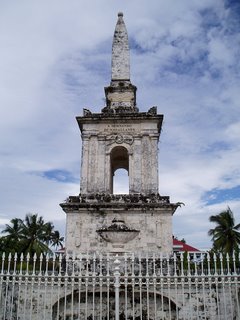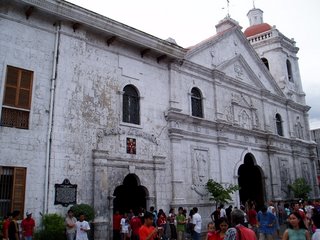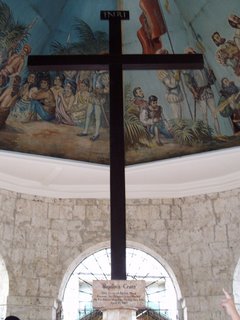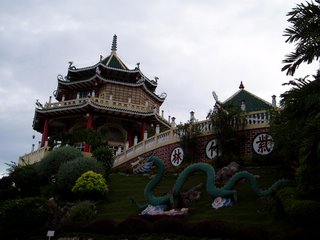
Magellan Marker
 Lapu-Lapu Monument
Lapu-Lapu Monument

 View from different angles of the Heritage of Cebu Monument
View from different angles of the Heritage of Cebu Monument
Fort San Pedro is the smallest, oldest tri-bastion fort in the country. It has a total inside area of 2,025 sq meters and is built from a mixture of corals, crushed lime stones and sand, and held together by egg white. This served as the nucleus of the first Spanish settlement in the Philippines. It then became an American Warwick Barracks during the American Regime and a jail for the Japanese during World War II.

Basilica del Santo Nino, the only basilica in the Far East, was built by Miguel Lopez de Legaspi on the site where the image of Santo Nino (the statue of Holy Child Jesus) was found in 1565. Considered as the oldest religious relic in the Philippines, the image has been venerated by the Cebuanos as its Patron Saint. At present, the miraculous image is kept in the Parish Convent, and a replica, adorned with gold and precious stones, is enshrined in glass and housed in the side altar inside the basilica.

 Image of Santo Nino
Image of Santo Nino
Planted in April 21, 1521 by Ferdinand Magellan, Magellan's Cross marks the spot where the first Christian Filipinos, were baptized. Natives began to take chips from the cross believing it had miraculous power so a kiosk like structure was built to protect the cross from total destruction. To protect it further, a hollow cross of wood was made to encase the original cross.

Our last stop for the afternoon is the Taoist Temple. Located at Beverly Hills, Cebu City, the temple preserves the teaching of Lao-Tse, the 600 B.C. Chinese philosopher. People climb the 81 steps representing the 81 chapters of Taoism scriptures to light joss sticks and have their fortune read.








2 comments:
wow..seems like a lot historical places to visit huh...and their architecture pretty much like europe
Yeah...the old part of town is very much like Europe, it's colonised by the Spanish afterall. The new part of town was built during US colonisation so the constructions are mainly American style, with straight roads and streets criss-crossing each other.
Post a Comment